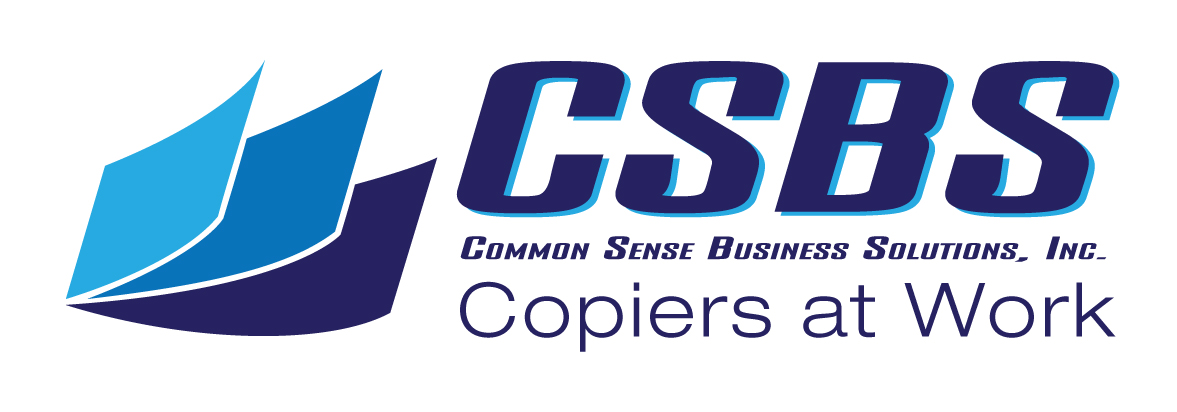If you’ve had your office printer for a while, and if you’ve been reading our blog posts and other related articles, you probably know how to get the most out of your printer.
Cost-effectiveness and efficiency are both important and relatively easy to maintain once you know what to do. But there are other “best practices” for your office printers, especially those that are connected to the Internet, which is increasingly common.
What’s That “Hacking” Noise Coming From Your Printer?
Actually, getting hacked is no laughing matter, but few people realize that their online printers serve as an opportunity for criminals and others to gain access to their networks.
Cyber-crime has become – and continues to become – increasingly sophisticated and at a frightening speed. And one of the targets for these malefactors is the ubiquitous office printer.
And it’s not a new phenomenon.
The website HelloTech.com shared this from a 2017 post,
“During Black Hat 2017, Ruhr University Bochum’s Jens Müller emphasized how people shouldn’t turn a blind eye on their printers for reasons of personal security. He reveals that in the hands of shrewd hackers, such humble machines could do anyone considerable damage.
A hacked printer, he said, can do anything from stealing personal info to defacing everything you print. It can even be bricked with a simple denial of service (DoS) attack. And because printers are ubiquitous, it means anyone or any organization can fall victim to them. To make matters worse, most of today’s printers come with Internet connectivity.”
And a blog post from UC Berkeley’s Information Security Office noted,

“Multifunction printers (MFPs) are experiencing an identity crisis: IT administrators don’t always see them as the full-fledged networked computers they really are. But attackers do – and they are finding them increasingly very attractive!
These printers, shoved in the corner of the office and quietly going about their business of copying, printing, faxing and scanning, might not seem to pose any real security risk. But like any networked device, if not properly managed, they can expose sensitive campus data to unauthorized access and misuse.”
So, the question is, of course: “How do we keep our printers and all-in-one devices secure?”
While it may not always be feasible or practical, minimizing the amount of personal or sensitive company information being printed or transmitted is a good general rule of thumb. Also, whenever possible, try to default to any dedicated or strictly “intranet” networks for general office printing use.
In addition, there are a number of actions that you can take to help keep your office printing network more secure.
- Make sure you have some type of printer encryption.
- Implement a use authorization system.
- Change your passwords immediately upon setting up your device.
- Keep all your printers up-to-date.
- Keep your printers physically within sight.
- Only enable services and processes you need and disable any others.
- Always choose a secure printer for your printing needs.
Internal Office Printer Security
Unfortunately, printer security must include “post-print” actions. Companies are liable for ensuring and maintaining employee privacy as well as securing sensitive company information. HR managers and staffers are familiar with these requirements, but many other employees may not be so aware.
There are a couple of key areas of concern after a document has been printed. One company suggests these steps for maintaining “post-print” security,
“There are several methods of protecting print jobs at the physical printer. One of the highest-recommended systems is an authorized-release process. This method can take several different forms, but all involve a user sending a job to a printer, and then releasing the job upon arrival at that specific device.
Often, these systems use a keycard scanner, NFC device, or password authentication into a printer’s display. This prevents sensitive documents from sitting around in a print tray if there is any delay in users picking up their printed materials (or if the job was accidentally sent to the wrong printer).
Aside from picking up lingering printed materials from the tray, another vulnerability once a print job is done is any data remaining on the printer’s hard drive. While encrypted printer hard drives are not required for all industries, it’s a best practice to uphold good print security by having spooled jobs sent to (and erased from) a removable, encrypted drive.”
Inner-office printer security is largely dependent on managing user behavior. Requiring and managing these secure printing practices will help:
- Discourage staff from printing emails through automated messages and pop-ups
- Make shredding bins available and accessible to nearby printers
- Enforce time frames for unclaimed copies to be shredded
Unintentional actions by employees can still sabotage even your best security processes, so it’s important to train business staff in properly using your office printer system and to revisit these practices periodically throughout the year.
FAQ: Printer Leasing for Labor Day Campaigns
1. What are the benefits of printer leasing for seasonal promotional campaigns?
Leasing a printer during a seasonal promotional campaign like Labor Day can save you from making large capital investments. Instead of buying equipment upfront, you spread costs over manageable payments. This method helps improve cash flow while ensuring access to the latest technology. According to a study by Keypoint Intelligence, companies can save 20-30% on printing costs through leasing.
2. Can printer leasing increase productivity during marketing campaigns?
Absolutely! With printer leasing, you get access to advanced, high-speed printers that reduce downtime and improve output. Modern multifunction printers can handle bulk printing tasks quickly, allowing you to focus on other campaign activities. According to InfoTrends, businesses using modern print technology saw a 40% boost in efficiency during busy seasons.
3. How does printer leasing help with maintenance costs?
Printer leasing often includes maintenance packages, so you don’t have to worry about paying out of pocket for repairs or routine servicing. Consumables like toner are also typically included. This ensures minimal downtime and no unexpected expenses, which is crucial during peak times like Labor Day.
4. Is printer leasing a cost-effective option for small businesses?
Yes, leasing is ideal for small businesses that need to conserve capital. Instead of purchasing a high-cost printer outright, leasing allows smaller monthly payments. Many leasing plans also include maintenance and tech support, reducing long-term costs. Research by SMB Group found that 60% of small businesses prefer leasing to keep their cash flow steady.
5. Can I lease a printer for short-term needs, such as a single promotional campaign?
Yes, many providers offer short-term leasing plans, which are perfect for campaigns like Labor Day. This way, you get access to the necessary equipment without committing to long-term contracts. Short-term leasing is growing, with Quocirca reporting a 15% rise in demand for flexible printer leasing plans among marketers.
6. What happens to the leased printer after my contract ends?
Once the leasing term is up, you have a few options. You can return the printer, upgrade to a newer model, or purchase it at a reduced price. Many businesses choose to upgrade to stay current with the latest technology, especially if printing needs evolve.
7. How do printer leasing contracts differ from purchasing outright?
Leasing contracts are typically flexible, with options to adjust based on your business needs. Purchasing outright requires a large upfront investment, while leasing breaks this into manageable payments. Leasing also usually covers maintenance, whereas ownership might leave you responsible for repairs.
8. Does printer leasing come with a warranty?
Most printer leasing agreements include warranties that cover repairs and replacements. This added protection helps ensure your device is always functioning during critical times, such as Labor Day campaigns. Studies from Gartner suggest that businesses with comprehensive leasing warranties experience 25% less downtime compared to those without.
9. Can printer leasing help with cybersecurity?
Yes, newer leased printers come with advanced security features such as encryption and user authentication, which help protect sensitive business data. This is especially important during high-traffic promotional periods when print volume spikes, and data security is critical.
10. Are there eco-friendly options for printer leasing?
Many leasing providers now offer energy-efficient, eco-friendly printers that help reduce your carbon footprint. Some even have recycling programs for consumables like toner. According to the Environmental Protection Agency, businesses that lease energy-efficient printers reduce energy costs by up to 20%.





